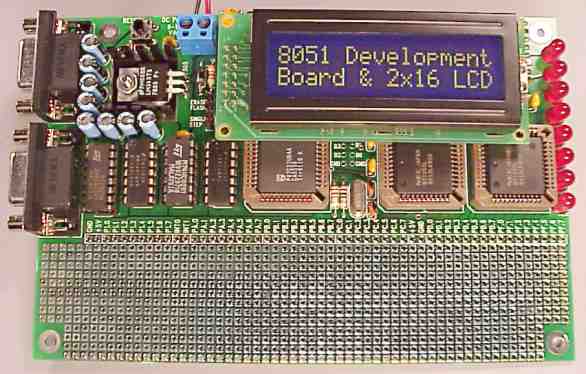|
|
| ||
|
Shopping Cart
|
| Home | MP3 Player | 8051 Tools | All Projects | PJRC Store | Site Map |
|
You are here:
8051 Tools
| Search PJRC |
SDCC is a free C compiler written by Sandeep Dutta, Micheal Hope, Alan Baldwin, John Hartman, Dmitry S. Obukhov, Jans J Boehm, Alan J Demers, Jean Loius-VERN, Daniel Drotos, Kevin Vigor, Johan Knol, Scott Dattalo, Karl Bongers, and others. More details are available at the official SDCC web site. The SDCC available here, with "-pj#" added to the version number, is a modified version that includes some additions to better support the 8051 developement boards available at this site.
GNU Make is written by Richard Stallman and Roland McGrath, as part of the Free Software Foundation's GNU's Not Unix project.
| Linux Download and Installation Instructions |
|---|
| Windows Download and Installation Instructions |
|---|
SDCC and GNU Make are Free Software provided under the GNU General Public License (GPL). AS31 is also Free Software, provided under the BSD license. The standard C libraries provided with SDCC are covered by the terms and conditions of the GNU Lesser General Public License (LGPL).
SDCC, AS31, and Gnu Make are distributed in the hope that they will be useful, but without any warranty; without even the implied warranty of merchantability or fitness for a particular purpose.
A copy of the old as31 page is still available.
PAULMON is a user-friendly 8051 family monitor, intended for use in a single board computer like the development board below. By placing PAULMON in the board's EPROM, the board will "boot-up" to a friendly menu-driven monitor which allows you to download your programs to RAM and run them, which is much faster and easier than reprogramming the EPROM. PAULMON also provides several features to help you debug your programs, including a disassembler and single-step program execution.
It is very easy to use and together with an 8051 family assembler, such as the one above, it provides a very low-cost 8051 development system. PAULMON is in the public domain. You may use pieces of the code in your own programs and even incorporate the code into your own commercial products, if you wish.
Download PAULMON2 Source or Object Code. Nearly everything is improved and several new features have been added... generally much better than version 1, even in the beta versions. Documentation for PAULMON2 is available on-line.
PAULMON1 was originally developed in the Fall of 1991 in about four weeks. The code has remained fixed, but my own needs have changed from project to project over the years. These changes, additional features, plus a major overhaul of the existing code is finally available as PAULMON2.
 |
| Figure 1: 8051 Development Board, Rev 4, With 16x2 LCD |
Important Features:
The older versions are still on line: Rev 3 (2001) Rev 2 (1997), and Rev 1 (1992). Parts for these boards are no longer available.
![]() These 8051 code examples are distributed in the hope that they will
be useful, but without any warranty; without even the implied
warranty of merchantability or fitness for a particular
purpose.
These 8051 code examples are distributed in the hope that they will
be useful, but without any warranty; without even the implied
warranty of merchantability or fitness for a particular
purpose.
I have designed and built a simple programmer for this cool part which can reprogram it in-circuit. You place the 89C2051 in this board, and connect the board to your project's 20 pin socket with a ribbon cable. You can download code to the programmer, reprogram the Atmel chip, and then place the chip back into the circuit. Since it's Flash ROM, no UV erase step is required. You can reprogram and test your code without moving the chip between sockets. As well, the programmer supports an "echo-thru" mode, where the 89C2051's UART output is echoed to the terminal controlling the 89C2051 in-circuit programmer, but only while the 89C2051 is running in-circuit.
To get started now, the design is quite similar to the development board example above, with the addition of the following chips: 74HC00, CD4007, and four CD4066. The three unused AND gates in that example are used here. Two NPN and one PNP small-signal transistors are needed, as well as a 12 volt power supply for the programming voltage and 4000 series logic. Only one of the 82C55's is used, but one 82C55 is required. BETA Version 0.004 is now available, also in ZIP format. As well, BETA Version 0.003 is still available, but 0.004 is much easier to use.
Someday more reasonable documentation and a schematic of the required hardware will appear. For now, this beta release schematic is available for those who want to try to add the hardware support to an existing development board.